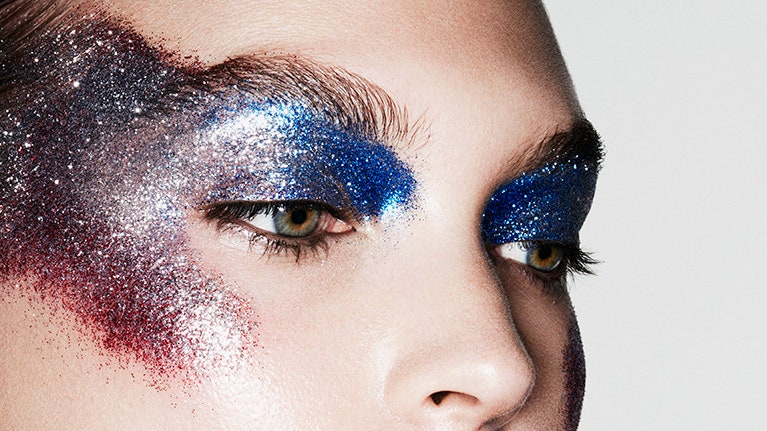
While glitter may add some much needed sparkle into our lives, anyone who has a young child – or simply loves to embrace the glitz – knows just how difficult it is to get rid of afterwards. It’s also what makes it so bad for the environment, considering that glitter is typically a form of microplastic: PET or PVC coated with aluminium and plastic film.
“All plastic is pollutive for our planet and health, but microplastic ends up in our waterways,” Zenia Jaeger, founder of plastic-free beauty brand Submission Beauty tells Vogue. “As with all plastic, it doesn’t biodegrade – it just breaks down into smaller and smaller pieces, making it impossible to ‘clean up’ or ‘recycle’ in any way.”
The ban begins in October
That’s why the EU has now imposed a ban on loose plastic glitter that’s not dissolvable or biodegradable, as part of its wider policy on microplastics, beginning this month. From 2027, rinse-off cosmetics containing loose plastic glitter will also be banned, while leave-on cosmetics will be banned from 2029. Meanwhile, glitter on clothing, where the decoration is considered secondary to the design, is not included in the ban (while a party hat covered in glitter is included, for example).
“Most glitter made of plastic falls into the category of potentially harmful microplastics,” Virginijus Sinkevičius, EU commissioner for the environment, oceans and fisheries, says via email. “They can easily enter water systems, where they are ingested by marine life, leading to internal physical harm. As these particles make their way up the food chain, humans, who are at the top of many food chains, might indirectly ingest these microplastics with consequential damage to human public health.”
The decision sparked a surge of panic buying in Germany earlier this month, as glitter lovers rushed to stock up on supplies ahead of the ban coming into place. But is the end really nigh for glitter? Not so fast. Firstly, the ban does not apply in the UK, now that we’re no longer in the EU. More importantly, there’s now a whole wave of eco-friendly glitter options out there, meaning your sparkle no longer needs to come with an environmental warning.
Zenia Jaeger, a make-up artist with 20 years of experience in the industry, decided to set up Submission Beauty in 2020 after becoming frustrated with the lack of truly sustainable options on the market. “There are a lot of brands out there using plant-based and vegan ingredients, but that only addresses certain aspects of sustainability when the products are packaged in unrecyclable, toxic plastic,” she explains.
Glitter alternatives
SubmissionBeauty’s glitter is made using cellulose – the main component found in plant wall cells – from eucalyptus trees, while the packaging made from glass and tin. “[Our] glitter is zero plastic and 100 per cent free from antimony [a type of metal] and aluminium, which makes it FDA-compliant for use on lips and around the eyes – something that standard glitter is not,” Zenia Jaeger explains.
